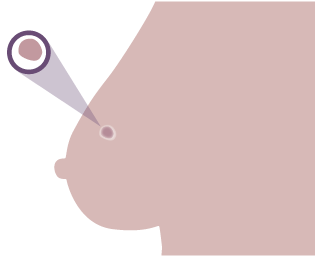Whilst mammography remains the most consistent modality for breast cancer detection, it is neither foolproof nor perfect. Additional modalities are required to supplement mammography in order to further increase accurate detection of breast abnormalities. Targeted breast ultrasound and MRI are modalities that are used currently as an adjunct to mammography, and again these are not without limitations.
Some breast cancers can be clinically abnormal, and yet be mammographically occult. In these cases adjunct modalities can be utilised. Current practice within UK breast units is for symptomatic referrals to be triple assessed, ie clinically examined, with any imaging and biopsy performed all in one visit (known as a 1-Stop Clinic). This can lead to a pressured environment for both patient and clinician alike.
Three years ago,
Kettering Breast Unit, at Kettering general Hospital, acquired three digital breast x-ray units that include digital breast tomosynthesis (DBT) and contrast-enhanced spectral mammography (CESM) capability, thereby introducing two further adjunct modalities into breast imaging assessment.
DBT produces images that are in essence ‘slices’ of the breast obtained at different angles producing a 3D image of the breast. This enables the radiologist to differentiate abnormalities from the composite effect of overlapping normal structures within the breast; this is especially beneficial for women who have dense breasts. CESM works in conjunction with normal mammography, and the use of iodinated contrast media. Much the same as we are all familiar with use of contrast in CT scanning, CESM uses the same principles to produce a subtracted image that shows areas of increased contrast uptake, which can highlight areas of increased angiogenesis that otherwise may not be seen.
Radiographers and breast radiologists at KGH have been trained in using both of these new modalities, and these services were introduced with strict local protocols and guidelines. All radiographers review the symptomatic referrals to assess eligibility for these new modalities, and will present them to the supervising radiologist prior to any examination being performed. This practice reduces patients being exposed to unnecessary radiation from multiple examinations.

DBT is used for abnormalities clinically assessed as P3, when mammography is unremarkable, or in women with a dense background pattern. It is also used for P1-P2 findings where the mammography has demonstrated an abnormality. CESM is used as a first line imaging tool where there are clinically suspicious P4-P5 findings, provided that the patient has no contraindications to the use of contrast media. Extent of disease and additional non-palpable foci are easy to interpret with the use of CESM, and as a result of this specificity, targeted ultrasound and biopsy is much improved within the parameters of a one-stop service.
The addition of these new modalities has proved to be invaluable to our breast service. Currently they are only available for symptomatic patients through the general practitioner (GP) referral pathway. The use of DBT in
National Health Service Breast Screening Programme women is currently undergoing the national approval process, but approval is expected in the near future.
Due to the incorporation of robust protocols and guidelines combined with cohesive team-working strategies, there is no evidence to suggest that incorporating these new modalities has caused any delays to the symptomatic one-stop service. Preoperative diagnostic output is improved, with patient delays for examinations reduced.
The lack of appropriate coding and insufficient reimbursement for the use of these new and innovative breast cancer detecting modalities is an issue that needs to be addressed at both local and national level as these modalities are utilised more widely.
 DBT is used for abnormalities clinically assessed as P3, when mammography is unremarkable, or in women with a dense background pattern. It is also used for P1-P2 findings where the mammography has demonstrated an abnormality. CESM is used as a first line imaging tool where there are clinically suspicious P4-P5 findings, provided that the patient has no contraindications to the use of contrast media. Extent of disease and additional non-palpable foci are easy to interpret with the use of CESM, and as a result of this specificity, targeted ultrasound and biopsy is much improved within the parameters of a one-stop service.
DBT is used for abnormalities clinically assessed as P3, when mammography is unremarkable, or in women with a dense background pattern. It is also used for P1-P2 findings where the mammography has demonstrated an abnormality. CESM is used as a first line imaging tool where there are clinically suspicious P4-P5 findings, provided that the patient has no contraindications to the use of contrast media. Extent of disease and additional non-palpable foci are easy to interpret with the use of CESM, and as a result of this specificity, targeted ultrasound and biopsy is much improved within the parameters of a one-stop service.

